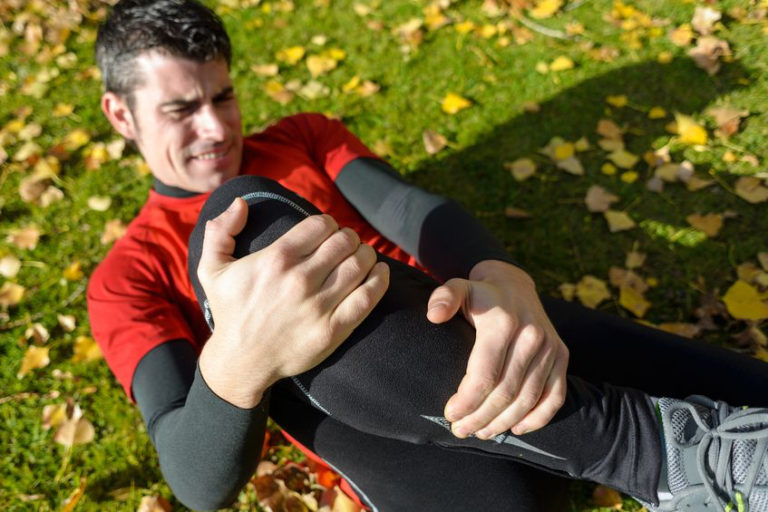Understanding Torn Meniscus Recovery: Torn Meniscus Recovery Time

A torn meniscus is a common knee injury that occurs when the cartilage that cushions the knee joint is torn. The meniscus is a C-shaped piece of cartilage that acts as a shock absorber and helps to stabilize the knee joint.
Types of Meniscus Tears and Their Severity
The severity of a meniscus tear can vary depending on the size and location of the tear. There are three main types of meniscus tears:
- Horizontal tear: This type of tear occurs across the width of the meniscus.
- Radial tear: This type of tear runs from the outer edge of the meniscus to the inner edge.
- Flap tear: This type of tear occurs when a piece of the meniscus is torn off and becomes loose.
The severity of a meniscus tear is also classified based on its size and location:
- Grade 1: This is a small tear that does not affect the stability of the knee joint.
- Grade 2: This is a larger tear that may cause some instability in the knee joint.
- Grade 3: This is a complete tear that involves the entire width of the meniscus.
Symptoms of a Torn Meniscus, Torn meniscus recovery time
The symptoms of a torn meniscus can vary depending on the severity of the tear. Some common symptoms include:
- Pain: This is usually a sharp pain that occurs immediately after the injury. The pain may be localized to the inside or outside of the knee, or it may be felt in the entire knee joint.
- Swelling: Swelling is a common symptom of a torn meniscus. It may occur immediately after the injury, or it may develop gradually over time.
- Stiffness: The knee may feel stiff and difficult to bend or straighten after a torn meniscus.
- Locking: The knee may lock or give way, making it difficult to walk or stand.
- Clicking: A clicking or popping sound may be heard when bending or straightening the knee.
Factors Affecting Recovery Time
Several factors can affect the recovery time from a torn meniscus, including:
- Age: Younger people tend to heal faster than older people.
- Activity level: People who are more active tend to have a longer recovery time than those who are less active.
- Tear location: Tears in the outer portion of the meniscus tend to heal better than tears in the inner portion.
- Overall health: People with other health conditions, such as diabetes or arthritis, may have a longer recovery time.
Treatment Options for Torn Meniscus

A torn meniscus is a common knee injury that can occur due to a sudden twisting or impact. The meniscus is a C-shaped piece of cartilage that acts as a shock absorber between the femur (thighbone) and tibia (shinbone). A tear in the meniscus can cause pain, swelling, stiffness, and difficulty with movement. The treatment options for a torn meniscus depend on the severity of the tear, the patient’s age, activity level, and overall health.
Conservative Management
Conservative management is the initial treatment approach for most torn meniscus injuries. It aims to reduce pain and inflammation, improve mobility, and allow the tear to heal naturally.
- RICE (Rest, Ice, Compression, Elevation): This is the first line of treatment for a torn meniscus. Resting the injured knee, applying ice to reduce swelling, compressing the area with a bandage, and elevating the leg above the heart can help alleviate pain and inflammation.
- Over-the-counter pain relievers: Nonsteroidal anti-inflammatory drugs (NSAIDs) such as ibuprofen or naproxen can help reduce pain and inflammation.
- Physical therapy: Physical therapy exercises can help strengthen the muscles around the knee, improve range of motion, and restore function. A physical therapist can guide you through exercises that are safe and effective for your specific injury.
Surgical Intervention
Surgical intervention is typically considered when conservative management fails to provide adequate pain relief or when the tear is severe and affecting knee function.
- Arthroscopic surgery: This minimally invasive procedure involves making small incisions in the knee and inserting a thin, telescope-like instrument called an arthroscope. The surgeon can then visualize the torn meniscus and repair or remove the damaged portion.
- Meniscectomy: This procedure involves removing the torn portion of the meniscus. It is often performed when the tear is too extensive to repair or when the damaged tissue is not viable.
- Meniscus repair: This procedure involves stitching the torn meniscus back together. It is typically performed for tears that are located in a stable area of the meniscus and have good blood supply.
Comparison of Treatment Options
The following table summarizes the pros and cons of conservative and surgical approaches to treating a torn meniscus:
| Treatment Option | Pros | Cons |
|---|---|---|
| Conservative Management |
|
|
| Surgical Intervention |
|
|
Recovery Timeline and Rehabilitation

Recovering from a torn meniscus involves a combination of rest, medication, and rehabilitation. The recovery timeline can vary depending on the severity of the tear, the treatment chosen, and individual factors such as age and overall health. However, a general understanding of the recovery stages and the importance of physical therapy can provide valuable insight into the healing process.
Stages of Healing
The recovery process typically involves several distinct stages:
- Initial Stage (First Few Days): This stage focuses on reducing pain and inflammation. Rest, ice, compression, and elevation (RICE) are essential. You may need to use crutches or a brace for support and avoid putting weight on the injured knee.
- Early Rehabilitation Stage (Weeks 2-6): During this stage, the focus shifts to regaining range of motion and strength. Physical therapy exercises, such as gentle range of motion exercises, isometric exercises, and strengthening exercises for the quadriceps and hamstrings, are crucial. The goal is to gradually increase activity levels and reduce pain.
- Intermediate Rehabilitation Stage (Weeks 6-12): This stage involves further strengthening and increasing the intensity of exercises. You may start incorporating activities like walking, swimming, and cycling. The focus remains on regaining functional movement and improving stability in the knee.
- Advanced Rehabilitation Stage (Weeks 12+): This stage focuses on returning to full activity levels. You may start participating in sports and other high-impact activities, gradually increasing the intensity and duration. The goal is to regain full function and prevent future injuries.
Importance of Physical Therapy
Physical therapy plays a crucial role in the recovery process after a torn meniscus. It helps to:
- Reduce Pain and Inflammation: Physical therapists can use modalities like ice, heat, and electrical stimulation to reduce pain and inflammation.
- Improve Range of Motion: Exercises designed to improve flexibility and range of motion in the knee joint are essential for regaining normal function.
- Strengthen Muscles: Strengthening exercises for the quadriceps, hamstrings, and other muscles surrounding the knee are crucial for stability and support.
- Improve Proprioception: Proprioception refers to the body’s ability to sense its position and movement in space. Physical therapy exercises can help improve proprioception and coordination, which are essential for preventing future injuries.
- Promote Healing: Physical therapy can stimulate blood flow and promote healing in the injured area.
Post-Operative Rehabilitation
Following surgery for a torn meniscus, a structured rehabilitation program is essential for a successful recovery. The following is a general guideline for post-operative rehabilitation:
- Immediate Post-Surgery (Days 1-2): Rest and ice are crucial during the first few days after surgery. You may need to use crutches or a brace for support and avoid putting weight on the injured knee. Gentle range of motion exercises may be started with a therapist’s guidance.
- Week 1-2: Gradual weight-bearing is introduced with the help of crutches or a brace. You may start performing gentle range of motion exercises and isometric exercises to strengthen the muscles surrounding the knee.
- Week 3-6: Increased weight-bearing and range of motion exercises are encouraged. You may start incorporating activities like walking, swimming, and cycling, gradually increasing the intensity and duration. Strengthening exercises for the quadriceps, hamstrings, and other muscles surrounding the knee are also crucial.
- Week 6-12: The focus shifts to regaining functional movement and improving stability in the knee. You may start participating in sports and other high-impact activities, gradually increasing the intensity and duration. It is essential to listen to your body and stop if you experience pain.
- Week 12+: The goal is to regain full function and prevent future injuries. You may continue to participate in sports and other activities, but it is important to maintain a regular exercise program and focus on proper form and technique to minimize the risk of re-injury.
Precautions
It is crucial to follow your surgeon’s and physical therapist’s instructions carefully and avoid activities that may put excessive stress on the injured knee.
- Avoid activities that cause pain or discomfort.
- Listen to your body and take breaks when needed.
- Wear a brace or support if recommended by your doctor.
- Avoid twisting or pivoting motions on the injured knee.
- Follow a structured rehabilitation program as prescribed by your physical therapist.
Torn meniscus recovery time – The recovery time for a torn meniscus can vary greatly depending on the severity of the tear and the individual’s overall health. Some individuals may require surgery, while others can recover with conservative treatment. A strong and dedicated team like the minnesota vikings might be able to inspire those recovering from a torn meniscus, as their resilience and dedication to their sport can serve as a motivating example.
Regardless of the chosen treatment path, it’s crucial to follow the recommended rehabilitation program to ensure a full and speedy recovery.
A torn meniscus can sideline an athlete for weeks, requiring careful rehabilitation to regain strength and mobility. While a player heals, the team’s depth chart becomes crucial, ensuring continuity on the field. For instance, the vikings depth chart shows how the team relies on backups to fill in during injuries, allowing the injured player ample time to recover fully.
This depth is vital to maintain a strong team performance even when key players are sidelined due to injuries like a torn meniscus.
